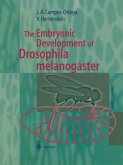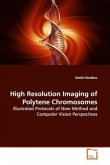Memory is dynamic: after pairing an odor with electric shocks, flies form an aversive odor memory that lasts for several hours and consists of qualitatively different components. An anesthesia-sensitive memory component (ASM) decays rapidly, whereas a consolidated anesthesia-resistant memory component (ARM) lasts significantly longer. Here the author shows that the evolutionary conserved phosphoprotein Synapsin is selectively required for the labile ASM. Synapsin is associated with a reserve pool of vesicles at the presynapse and is required to maintain vesicle release specifically under sustained high frequency nerve stimulation. In contrast, the requirement of the active zone protein Bruchpilot is most pronounced in immediate vesicle release. The author shows that Bruchpilot is required for aversive olfactory memory and localizes the requirement of Bruchpilot to the Kenyon cells of the mushroom body, the second-order olfactory interneurons in Drosophila. He demonstrates that Bruchpilot preferentially functions for the consolidated ARM. Thus, different presynaptic proteins can dissociate consolidated and labile components of olfactory memory.
Bitte wählen Sie Ihr Anliegen aus.
Rechnungen
Retourenschein anfordern
Bestellstatus
Storno








